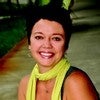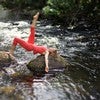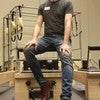Premium workshop
You can view a 2 minute preview. For details, scroll down below the video.
Description
Objectives
- Discover where we have biases and inhibitions from static positioning and posturing
- Define the axes for each plane of movement in the Pelvic Clock
- Learn new ways to cue the body so you can use the Pelvic Clock to be in the correct alignment during certain exercises
- Learn about the action-reaction phenomenon and how it relates to each movement
About This Video
Comments
The pelvis being a 3d structure can make these movements difficult to explain. You've done a wonderful job.
You need to be a subscriber to post a comment.
Please Log In or Create an Account to start your free trial.




















